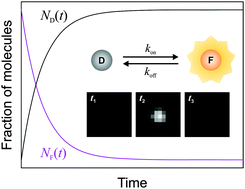How to switch a fluorophore: from undesired blinking to controlled photoswitching
Abstract
Molecular optical photoswitches based on fluorescent

- This article is part of the themed collection: Single-molecule optical spectroscopy
* Corresponding authors
a
Department of Biotechnology & Biophysics, Biocenter, Julius-Maximilians-University Würzburg, Am Hubland, 97074 Würzburg, Germany
E-mail:
vdlinde@uni-wuerzburg.de, m.sauer@uni-wuerzburg.de
Fax: +49 931 31-84509
Tel: +49 931 31-80935
Molecular optical photoswitches based on fluorescent

 Please wait while we load your content...
Something went wrong. Try again?
Please wait while we load your content...
Something went wrong. Try again?
S. van de Linde and M. Sauer, Chem. Soc. Rev., 2014, 43, 1076 DOI: 10.1039/C3CS60195A
To request permission to reproduce material from this article, please go to the Copyright Clearance Center request page.
If you are an author contributing to an RSC publication, you do not need to request permission provided correct acknowledgement is given.
If you are the author of this article, you do not need to request permission to reproduce figures and diagrams provided correct acknowledgement is given. If you want to reproduce the whole article in a third-party publication (excluding your thesis/dissertation for which permission is not required) please go to the Copyright Clearance Center request page.
Read more about how to correctly acknowledge RSC content.
 Fetching data from CrossRef.
Fetching data from CrossRef.
This may take some time to load.
Loading related content
